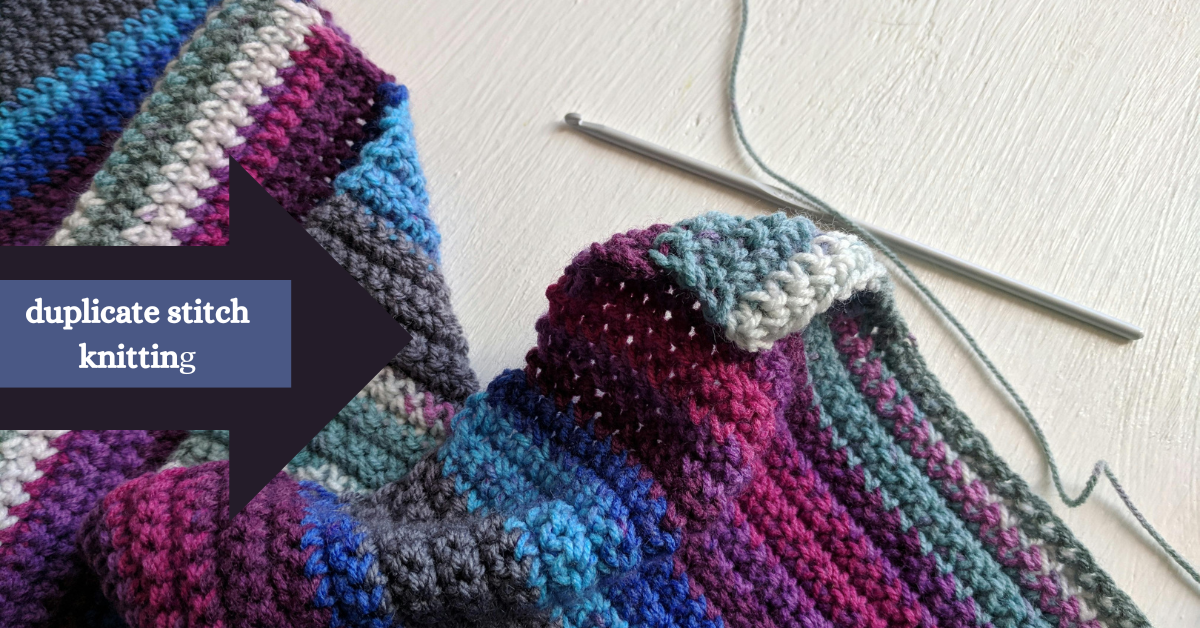Duplicate stitch knitting is an easy embroidery technique used to add color designs or motifs to stockinette stitch fabric after a project is finished. Instead of working with multiple colors while knitting (as in intarsia or Fair Isle), you can embroider on top of the stitches using a yarn needle and contrasting yarn, following the exact shape of existing knit stitches.
This method is perfect for beginners who want to customize their knitting projects with letters, patterns, or small pictures—without the complexity of colorwork during the knitting process.
Why Use Duplicate Stitch?
Duplicate stitch knitting is valued for its:
- Simplicity: No need to juggle multiple yarns at once.
- Customization: Easily personalize hats, sweaters, scarves, or mittens.
- Flexibility: Great for correcting mistakes or adding details post-knitting.
- Clean appearance: When done correctly, it blends seamlessly with the knitted fabric.
It’s ideal for adding names, hearts, stripes, geometric patterns, or holiday-themed icons to otherwise plain items.
What You’ll Need
To use duplicate stitch in knitting, you only need a few tools:
- Completed knit item in stockinette stitch (smooth side facing).
- Tapestry or yarn needle with a blunt tip.
- Yarn in contrasting color (preferably same weight or slightly lighter).
- Scissors.
- Graph paper or a duplicate stitch chart (optional for planning).
This technique works best on smooth, flat stockinette areas, not textured or ribbed patterns.
How to Do Duplicate Stitch
Follow these steps to apply duplicate stitch embroidery:
Step 1: Thread Your Yarn Needle
Cut a piece of yarn about 18 inches long (avoid extra long lengths to prevent tangling). Thread your tapestry needle.
Step 2: Insert the Needle
Start from the back of the fabric, bringing your needle up through the base of the “V” of the stitch you want to cover.
Step 3: Outline the V
Insert the needle under both arms of the stitch above the one you’re duplicating—this creates the top of the duplicate stitch.
Step 4: Complete the V
Bring the needle back down through the same point where you started. This completes the loop and overlays your colored yarn exactly on top of the original stitch.
Step 5: Continue Stitching
Move on to the next stitch following your pattern or design. Make sure to anchor the stitches gently on the back without pulling too tight or leaving them loose.
Tips for Clean Duplicate Stitch Work
- Tension is key: Keep your overlay stitches snug but not too tight. The goal is for them to lie flat and match the surrounding stitches.
- Use a yarn similar in weight: If your duplicate yarn is too thick, it will look bulky. If too thin, it won’t fully cover.
- Work in good lighting: Seeing individual stitches clearly makes it much easier.
- Secure ends properly: Weave in the ends on the back without creating bulk.
- Practice on a swatch: Before applying to a finished piece, try it out on a practice square.
When to Use Duplicate Stitch
Here are some creative ways to use duplicate stitch knitting:
- Add names or initials to baby blankets, hats, or scarves.
- Embroider simple shapes like hearts, stars, or snowflakes.
- Apply logo patches on sportswear or fan gear.
- Fix colorwork errors without frogging rows.
- Customize gifts quickly without complex pattern changes.
Pros and Cons of Duplicate Stitch
Pros:
- Easy to learn and use.
- Adds detail after knitting is complete.
- Reversible—just remove the embroidery if needed.
- Perfect for single motifs or small patterns.
Cons:
- Can look bulky if yarn choice or tension is off.
- Not ideal for large, complex designs.
- May snag more easily if not stitched securely.
Comparing Duplicate Stitch to Other Colorwork Techniques
| Technique | Worked During Knitting? | Best For | Skill Level |
|---|---|---|---|
| Duplicate Stitch | No | Small, detailed motifs | Beginner |
| Intarsia | Yes | Large blocks of color | Intermediate |
| Fair Isle | Yes | Repeating color patterns | Intermediate–Advanced |
For small areas or personalization after a project is done, duplicate stitch is often the simplest and most flexible method.
Final Thoughts
Duplicate stitch knitting is an accessible way to bring extra personality to your hand-knit pieces without the need to learn complicated colorwork techniques. It’s beginner-friendly, fun, and opens the door to creativity with names, shapes, and designs.
Whether you’re updating a basic beanie, personalizing a baby gift, or repairing a color mistake, duplicate stitch is a valuable technique every knitter should know. Try it out on your next project—you’ll love the clean, colorful results!

